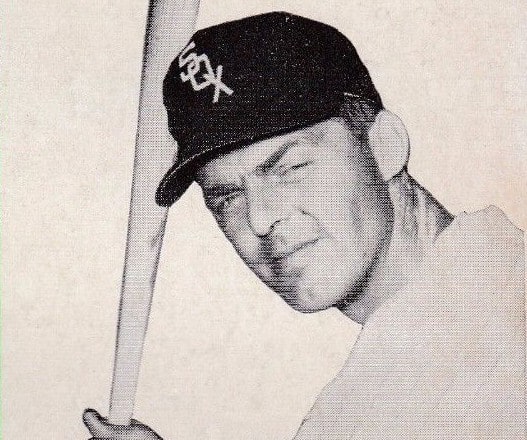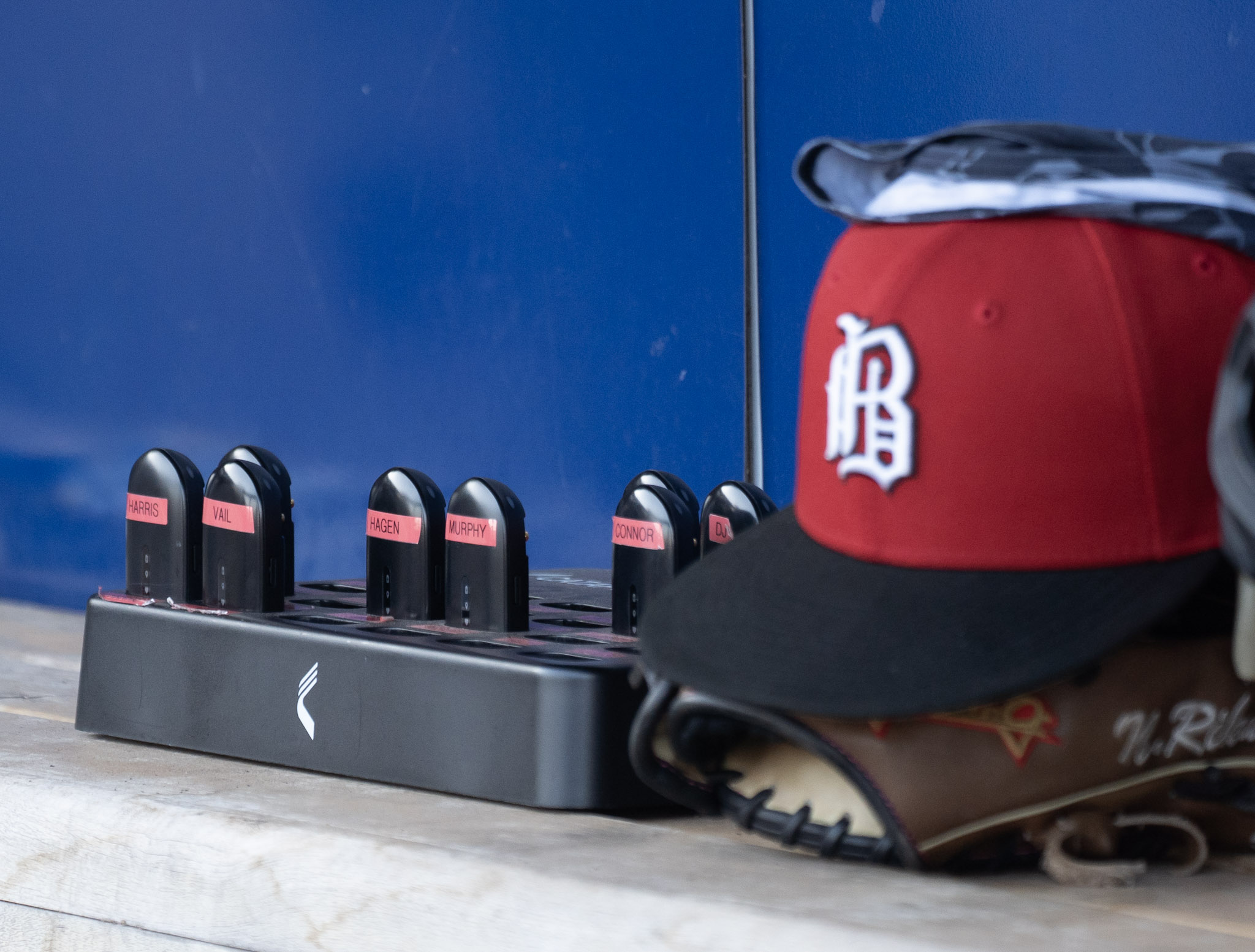In chronological order:
Bob Sadowski
Died: Jan. 6, 2017 at age 79
Played for White Sox: 1962
Sadowski's career spanned from 1960 to 1963, and he appeared for a different team in every season. He broke in with the Cardinals for one game in 1960 before a trade sent him to the Phillies. He played 16 games for Philadelphia in 1961, after which he was dealt to the White Sox in a four-player deal that ended up involving six players because Andy Carey refused to report to the Phillies.
Sadowski provided some pop off the bench, hitting .231/.299/.438 with six homers in 145 plate appearances. A third of them came as a pinch hitter, with 16 games at third and 10 games at second. He'd be on the move again after the season, as the Angels selected him in the Rule 5 draft. He spent all of 1963 with Los Angeles, which accounted for the remainder of his major-league career. He spent six seasons in the minors afterward.
Jackie Brown
Died: Jan. 8, 2017 at age 73
Coached for White Sox: 1992-95
After a middling seven-year career for the Senators, Rangers, Indians and Expos during the 1970s, Brown spent the 1980s and 1990s in the coaching ranks. He eventually found his way to the White Sox in December of 1991 after seven years as the Pirates' Triple-A pitching coach. General manager Ron Schueler picked him up to replace Sammy Ellis, who decided to take the Cubs' bullpen coach job instead of waiting for Schueler to decide on a staff for new manager Gene Lamont.
Brown oversaw a highly successful pitching staff featuring Jack McDowell, Alex Fernandez and Wilson Alvarez. That tenure included McDowell's Cy Young season of 1993, still the most recent in franchise history.
Alas, that run came to an end with the strike. McDowell was traded to the Yankees before the start of the season, and the staff that remained couldn't find the strike zone. After an 11-20 start to the season, the White Sox fired Lamont, along with Brown and bullpen coach Rick Peterson, due to a league-high 5.3 walks per game. Brown was replaced by Triple-A pitching coach Don Cooper.
Roy Sievers
Died: April 3, 2017 at age 90
Played for White Sox: 1960-61
SABR bio
While the White Sox won the American League pennant in 1959 after years of getting stuck behind the Yankees, Bill Veeck had long wanted the team to flash more power, and the first taste of glory only made him want it more. After the season, he and GM Hank Greenberg traded promising catcher Earl Battey, prospect first baseman Don Mincher and $150,000 to the Washington Senators for the 32-year-old Sievers, who had been one of the best power hitters in the American League.
Sievers delivered as well as could be expected for an aging slugger. He hit .295/.386/.535 with 55 homers over his two years with the White Sox, which was impressive considering he started his South Side career in a platoon with Ted Kluszewski (Al Lopez didn't see eye-to-eye with Greenberg).
The problem? The White Sox still finished toward the bottom of the league in homers, and now their best players were on the downside. That included Sievers, who missed time with shoulder issues. Meanwhile, Battey had a breakout season with the Twins in what turned out to be a nice career, and Mincher turned into an average player in time, too. This deal, along with the Minnie Minoso trade that cost the team Norm Cash and John Romano, represents a miscalculation that hurt the Sox on the position-player side over the remainder of the decade, though it was no fault of Sievers.
The White Sox were able to recoup some future value by trading Sievers to Philadelphia after the 1962 season. They received John Buzhardt and Charley Smith, and Buzhardt turned into a capable starter in those talented rotations to come while Sievers' decline phase became undeniable. They could have used Battey over his run in the 1960s, though, and Mincher would have been an upgrade, too. Take 1965 for example.
Sam Mele
Died: May 1, 2017 at age 95
Played for White Sox: 1952-53
SABR bio
Mele played for six of the eight American League teams over his 10-year career, and he can thank Frank Lane for part of that. The hyperactive White Sox GM acquired Mele from the Senators on May 3, 1952, the traded him to the Orioles in February of 1954.
In between, Mele maintained his steady production at the plate. He hit .262/.341/.419 with 26 homers and 141 RBIs over two seasons, walking more often than he struck out (106 to 87). He wasn't much of an outfielder, and so Lane traded him to Baltimore for Johnny Groth, who handled most of the center field duties the following season.
Bob Kuzava
Died: May 15, 2017 at age 93
Played for White Sox: 1949-50
Before Kuzava made his MLB debut in 1946 for the Indians, he'd already seen a little action of a different type by serving as a military policeman in India and Burma during World War II. That explains the nickname "Sarge."
He pitched sparingly for the Indians before they dealt him to the White Sox after the 1948 season. He went from a World Series champ to a cellar-dweller, but it gave him a chance to establish himself. He capitalized on the opportunity well enough, going 10-6 with a 4.02 ERA over 157 innings for a 91-loss White Sox team.
Kuzava only appeared in 10 more games for the White Sox. On May 31, 1950, Lane dealt him to Washington in a six-player swap (Cass Michaels was the headliner). It was part of an overall purge that had claimed manager Jack Onslow four days earlier.
Kuzava eventually found greater fame, but not with the Senators. The Yankees acquired him from Washington while he was rehabbing from a torn Achilles tendon Nellie Fox gave him on a play at first. Kuzava came back as a reliever for the bulk of his remaining career, and he ended up being the only pitcher to record saves in consecutive Game Sevens, as he closed out championships for the Yankees in 1951 and 1952. He ended up getting a third ring with the Yankees in 1953, and that hardware is a big reason why he's in the National Polish-American Sports Hall of Fame.
Jimmy Piersall
Died: June 3, 2017 at age 87
Broadcast for White Sox: 1977 to 1981
SABR bio
By 1955, Piersall had already provided enough material for a book about his life. Two years later, "Fear Strikes Out" was adapted into movie form starring Anthony Perkins. His penchant for entertaining and disruptive behavior overshadowed his talent as an outfielder early in his career, but his problems ran deep. He had a nervous breakdown and needed treatment for manic depression/bipolar disorder. Eventually, he was able to find a working balance between clowning and producing, especially with his defense.
He walked that line for several years in the White Sox broadcast booth. At his best, he could be candid and entertaining, and Bill Veeck gave Piersall and Harry Caray plenty of leeway in the booth to make up for a shortage of entertainment elsewhere. At his worst, his penchant for (self-)destructive behavior wore out the White Sox. One could defend his blunt assessments of White Sox personnel as a way of channeling the thoughts of frustrated fans, but he crossed the lines in other ways that couldn't be defended:
Before a game in 1980, Piersall choked Bob Gallas, then a sports writer for the suburban Daily Herald, in the White Sox clubhouse after criticism of Gallas' work as an official scorer. [...]
If Piersall seemed a sexist boor in calling Mary Frances Veeck "a colossal bore" and saying her place was in the kitchen, he doubled down the next year on a 1981 TV show with newspaperman Mike Royko.
Piersall infamously dismissed players' wives as "just horny broads that wanted to get married, and they wanted a little money, a little security, and they wanted a big, strong ballplayer."
The new ownership of Jerry Reinsdorf and Eddie Einhorn didn't see Piersall the way Veeck did. After a couple years of awkward coexistence, they couldn't justify giving air time to a guy who so willingly targeted White Sox personnel. The White Sox fired him and replaced him with Hawk Harrelson, which was not a popular move at the time.
Dom Zanni
Died: July 6, 2017
Played for White Sox: 1962-63
In one week in the November of 1961, new general manager Ed Short made drastic moves to recover from Greenberg's veteran-oriented deals. He traded Minoso to Washington and Sievers to Philadelphia before pulling off the biggest deal, sending Billy Pierce to San Francisco for four players in return. Zanni received second billing in the Chicago Tribune's article behind Eddie Fisher, and in front of Bob Farley and the player to be named later (Verle Tiefenthaler).
That ended up being the correct order in terms of careers. Fisher was the knuckleballing relief horse, while Farley and Tiefenthaler only played a partial season on the South Side. In between, the 30-year-old Zanni provided 86 innings out of the White Sox bullpen in 1962, posting a 3.75 ERA and saving five games. After a rocky start to his 1963 season, the White Sox dealt him to Cincinnati for Jim Brosnan. It was Brosnan's last season, but Short still ended up on the better half of that deal.
Tom Wright
Died: Sept. 5, 2017 at age 93
Played for White Sox: 1952-53
SABR bio
Another outfielder who came and went in quick succession during Trader Frank Lane's heyday, Wright hit .254/.332/.383 over 137 games between part of the 1952 season and all of 1953. While it's not quite a full season of games, it's more than he played for any other team, as he was oft-traded.
The start of his career was delayed by World War II, as he served in the Army Air Corps in the South Pacific.
Ralph Faucher
Died: Sept. 22, 2017 at age 91
Broadcast for White Sox: 1971-72
The White Sox went 56-106 in 1970, and the losing took a major toll on the franchise. Only 495,000 fans showed up to Comiskey Park, and they lost their both their radio deal with WMAQ-AM 670 and the broadcast team of Bob Elson and Red Rush.
It was a low point for the franchise, but such nadirs create opportunities for others. Elson's departure opened the door for Harry Caray. Alongside him was Faucher, who managed to snag the White Sox' radio rights for tiny 5,000-watt WTAQ-AM in La Grange. The Sox had to pay for air time during those two years, and WTAQ provided the best signal as the lone AM station in a network comprising several other small FM affiliates.
Faucher, who was the sales and sports director for WTAQ, rode shotgun alongside Caray for two years as the White Sox climbed back into respectability. WMAQ wanted to buy back the rights after a 79-win season in 1971, but the small stations exercised their option for 1972 and aired the action for a surprising second-place team.
WTAQ's rights expired after the second season, and so Faucher went back to calling high school basketball games for a station he ultimately bought. Ed Sherman has his story, and it's worth reading. He called his time with the White Sox "best two years in broadcasting."
Jim Landis
Died: Oct. 7, 2017 at age 83
Played for White Sox: 1957-1964
SABR bio
Baby Boomer White Sox fans can pay a center fielder no higher compliment than comparing his defense to that of Landis.
It should be said that Landis could hit a little, too.
He had to weather struggles his rookie season, but from 1958 through 1961, Landis was also a threat with his offense. He hit .272/.362/.419, averaging 13 homers and 20 steals a season, which made him an immensely valuable player on the whole. He finished seventh in MVP voting in 1959, then won five consecutive Gold Gloves from 1960 through 1964.
Landis had a fun origin story, as he was born and bred by notable figures in White Sox history. He was signed by Sloppy Thurston (the last White Sox pitcher to throw an immaculate inning) and coached up by Johnny Mostil (another talented outfielder who battled demons).
His departure from the organization was less satisfying. His play had started to tail off in 1962, as his production dipped across the board. By 1964, he hit just .209/.305/.272 with one homer and five stolen bases over 106 games. Landis fell out of favor with Al Lopez, and Short, the GM who traded Minoso and Pierce years earlier, dealt Landis to Kansas City in a three-team trade on Jan. 20, 1965.
Landis fans hanged an effigy of Lopez, but it's hard to argue with the move. The Sox gave up an aging Landis, along with Mike Hershberger and Fred Talbot. In return, they acquired Tommy John and Tommie Agee. John won 14 games in his first year with the White Sox to start a near-HOF career, and Agee won the Rookie of the Year in 1966 manning Landis' old spot.
Daniel Webb
Died: Oct. 14, 2017 at age 28
Played for White Sox: 2013-16
The White Sox acquired Webb along with Myles Jaye from Toronto for Jason Frasor after the 2011 season, and it didn't seem as though he'd amount to much. In his first full season in Kannapolis, the 22-year-old Webb posted a 5.81 ERA while striking out just 50 batters over 62 innings.
One year later, he was pitching for the White Sox. He straightened out his command and rode his fastball-slider combination from Winston-Salem to Birmingham to Charlotte to a September call-up.
He parlayed an encouraging debut into a full-time job in 2014, and while he walked too many batters, he managed to limit the damage to a 3.99 ERA while veterans like Ronald Belisario and Matt Lindstrom imploded.
When the competition improved, Webb couldn't quite hang. He bounced between Chicago and Charlotte in 2015 as his control problems finally bit him (6.30 ERA, 22 walks, 22 strikeouts over 30 innings). He started the 2016 season in Charlotte as well before a promotion in late April. He made one appearance in mop-up duty, striking out the side around two hits and a walk in an inning of work. That was his only inning, as he underwent Tommy John surgery shortly after.
The White Sox released him after the season, but Webb was contemplating a comeback before he died in an ATV accident. Teammates remembered him fondly for being an avid outdoorsman and a great storyteller, and David Robertson set up a fund for Webb's wife and child.
Jim Rivera
Died: Nov. 13, 2017 at age 96
Played for White Sox: 1952-61
SABR bio
Another fan favorite among the Go-Go Sox faithful, Manuel Joseph Rivera earned the nickname "Jungle Jim" for his energetic, reckless style of play in right field and on the basepaths. At least the "Jungle" part (the name "Jim" came from a classmate).
None of Rivera's numbers pop off his B-Ref page, except for maybe his caught-stealing total. He was an OK hitter with some pop, and a speedy runner who would be chastised for inefficiency, especially early in his career. Nevertheless, he worked for the White Sox' speed-and-defense brand of baseball, and he worked for the White Sox off the field. His infectious personality made him a natural season-ticket salesman.
There's a less charming undercurrent to his career. While serving in the Army Air Corps in the 1940s, he was convicted of attempted rape and served five years in prison before being paroled in 1949. Baseball got him out of prison, as the owner of the Atlanta Crackers lobbied for Rivera's release.
That wasn't the only rape charge he'd face, either. At the end of the 1952 season, he was arrested in the White Sox clubhouse on another rape charge. In this one, the grand jury cleared him after Rivera passed a lie detector test.
Rivera stayed out of documented trouble the rest of his career, so he made the most out of his second (or third) chance. He'd probably get multiple chances this day and age, too, as Josh Lueke can attest, but the "baseball saved his life" storyline would probably be viewed with far less reverence.
Frank Lary
Died: Dec. 13, 2017 at age 87
Played for White Sox: 1965
SABR bio
Lary was a durable and effective pitcher for the Tigers in the late 1950s, averaging 17 wins and 257 innings a season from 1955 to 1961.
Arm problems set in afterward, though. He bounced around by the time he got to the White Sox in 1965, as Chicago was his fourth stop over the last two seasons. The Tigers traded him to the Braves, who sold him to the Mets, who traded him to the White Sox for a player to be named later in 1965.
He pitched mostly in long relief for Al Lopez, but he did make one start on July 31 and picked up his 128th and final victory against his former team.
(Information gleaned from SABR biographies, Richard Lindberg's Total White Sox and Chicago Tribune archives.)






